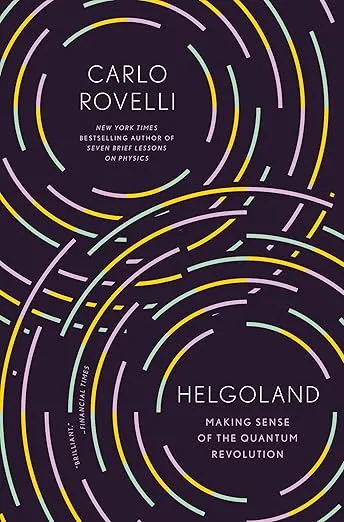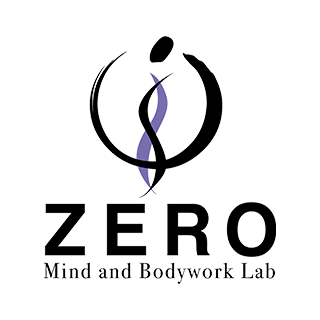Introduction
My name is Hidefumi Otsuka, and I offer Rolfing® sessions in Shibuya, Tokyo.
Rolfing works by approaching the fascia to restore alignment and balance in the body. When we begin to perceive the body as a single interconnected system, the idea of relationship naturally emerges.

In this blog post, I explore the meaning of “relationship” in Rolfing, inspired by physicist Carlo Rovelli and his Relational Interpretation of Quantum Mechanics. Drawing from his book Helgoland, I aim to deepen the understanding of how the body connects with the world.
Ida Rolf on Relationship — Flow with Gravity
“When the body gets working appropriately, the force of gravity can flow through. Then, spontaneously, the body heals itself.”
— Dr. Ida Rolf
According to Ida Rolf, the founder of Rolfing, when the body is aligned, it enters into harmonious relationship with gravity, allowing natural healing to occur. The body, she believed, is not an isolated “thing” but becomes a living body only through its interaction with gravity.
Structural integration, then, is the process of reconstructing the body’s relationship with gravity and the world.
Jeff Maitland: The Body as a Field of Phenomena, the Emergence of Relationship
“Seeing is letting ‘what is’ show itself.”
— Jeff Maitland, Embodied Being
Jeff Maitland, who brought philosophical depth into Rolfing, describes the session as an event of relationship. Rolfing is not something we “do” to the body—it is a relational space where change emerges naturally through seeing, touching, and waiting.
What matters most is not control, but the willingness to wait for relationship to arise.
Kevin Frank: Integration of Structure and Function as Exchange of Information
“We’re not touching tissue. We’re touching information.”
— Kevin Frank
Kevin Frank, Rolf Movement Instructor, brings in the idea of “information.” He suggests that Rolfing is an exchange of information—not simply a physical intervention.
This information flows within a relational field shared by the practitioner and client, blending body and mind.
Carlo Rovelli’s Relational Physics: The World Is Made of Relationships
“There are no things, only processes and relations.”
— Carlo Rovelli, Helgoland
Physicist Carlo Rovelli, known for his work in quantum gravity, challenges the idea of fixed entities. In his theory, even subatomic particles have no inherent identity; their properties emerge only in relationship with others.

In Helgoland, Rovelli explains this idea in accessible language. His worldview deeply resonates with the philosophy of Rolfing, particularly in how we understand the body not as substance but as relation.
What Is a “Good Relationship” in Rolfing?
By integrating Rovelli’s view—“relationship as the organizing principle of the world”—with the views of Rolfers, we can identify three key insights:
1. Relationship is not fixed; it shifts with the field
The client’s structure is not static. It is shaped and reshaped in the field of relationship that emerges during a session.
2. The session is an informational field
Touch, vision, speech, and breath are all part of a rich exchange of information. Healing arises from this woven processof body, space, time, and mind.
3. A good session dissolves boundaries between self and other
When a safe and open “in-between” space is created, the client can begin to rebuild their relationship with the world and with themselves.
The Rolfing Ten Series and Its Impact on the Mind and Psyche
The Rolfing Ten Series is not merely about physical structure. It is a journey of relational reconstruction with the outer and inner world.
- Sessions 1–3: Reconnect with the external world through breath, support, and openness
- Sessions 4–7: Deepen the connection with the inner core
- Sessions 8–10: Integrate the whole — restore a dynamic relationship with self, others, and the environment
This process naturally touches emotional and psychological layers, including trauma. Many clients have shared how the work lightened their emotional burden and helped them “return to themselves.”いる。
Client Testimonials
“As my body came into alignment, my thoughts also cleared. I could finally see what I really needed.”
— Woman in her 30s, announcer
“I realized how connected my body and mind really are. I now feel like I have a solid foundation inside myself.”
— Man in his 20s, office worker
“What I love about Rolfing is how it guides me toward independence.”
— Woman in her 30s, company employee
These voices share a common theme: a shift in the quality of relationship—not only with the body, but also with thoughts, emotions, and a deeper sense of life direction.
Conclusion — Weaving Relationship Through the Body
A Rolfing session is the practice of reweaving relationships—between practitioner and client, between body and gravity, between now and past experiences.
If, as Rovelli suggests, relationship is the very essence of existence, then Rolfing may indeed be considered a relational art expressed through the body.
If you’re curious about Rolfing or would like to experience a trial session, feel free to reach out.
References
- Ida Rolf, Rolfing: Reestablishing the Natural Alignment and Structural Integration of the Human Body for Vitality and Well-Being
- Jeff Maitland, Embodied Being
- Kevin Frank, Notes on Rolfing Movement and Perception
- Carlo Rovelli, Helgoland

